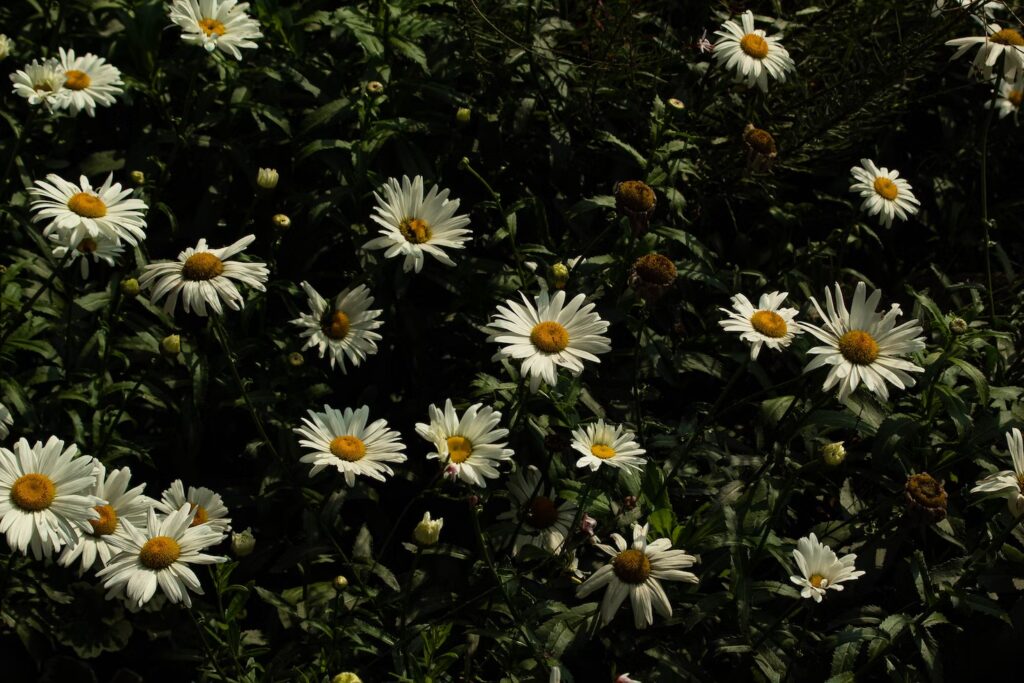Shasta daisies (Leucanthemum × superbum) are popular garden flowers known for their bright white petals and yellow centers. These perennial plants bloom in the summer and attract pollinators such as bees and butterflies. However, what many people do not know is that these beautiful flowers can also be grown indoors as houseplants.
In this article, we will explore the characteristics of Shasta daisies and the benefits of growing them indoors. We will also provide tips on how to care for Shasta daisies as a houseplant.
Table of Contents
Characteristics of Shasta Daisies
Shasta daisies are herbaceous perennials that grow up to 3 feet (0.9 metres) tall and 2 feet (0.6 metres) wide. They have a clumping habit, which means that they produce new growth from the base of the plant each year. The flowers are daisy-like with white petals and yellow centers, and they bloom in the summer.
The foliage of Shasta daisies is dark green and slightly serrated. The leaves are arranged alternately on the stem, and they grow up to 6 inches (15 centimetres) long. The stems are sturdy and can support the weight of the flowers without staking.
Shasta daisies are easy to grow and low maintenance. They prefer full sun to partial shade and well-draining soil. They can tolerate drought conditions but will bloom best with regular watering. Shasta daisies are also resistant to pests and diseases, which makes them an ideal plant for beginners.
Benefits of Growing Shasta Daisies Indoors
Growing Shasta daisies indoors as houseplants has several benefits. First, they add a pop of colour and freshness to any room. The bright white petals and yellow centers of the flowers are striking against the green foliage and can brighten up any space.
In addition, Shasta daisies are known to improve indoor air quality. They absorb harmful chemicals such as formaldehyde and benzene from the air and release oxygen, which makes the air cleaner and healthier to breathe. This makes Shasta daisies an ideal plant for people who suffer from allergies or respiratory problems.
Thirdly, growing Shasta daisies indoors can help reduce stress and anxiety. Studies have shown that plants have a calming effect on people and can help reduce stress levels. Having a Shasta daisy in your home or office can create a more peaceful and relaxing environment.
Tips for Growing Shasta Daisies Indoors
If you want to grow Shasta daisies indoors as houseplants, there are a few things you should keep in mind. Here are some tips for caring for Shasta daisies as a houseplant:
- Choose the Right Pot and Soil
When growing Shasta daisies indoors, it is important to choose the right pot and soil. The pot should be large enough to accommodate the plant’s root system and allow for adequate drainage. You can use a plastic or ceramic pot, but make sure it has drainage holes in the bottom.
The soil should be well-draining and nutrient-rich. You can use a commercial potting mix or make your own by mixing equal parts of peat moss, perlite, and vermiculite. Adding compost or slow-release fertilizer to the soil can also help promote healthy growth.
2. Provide Adequate Light
Shasta daisies require full sun to partial shade to grow and bloom. If you are growing them indoors, place them in a sunny window that receives at least 6 hours of sunlight per day. You can also use artificial grow lights if you do not have access to natural sunlight.
3. Maintain Humidity
Shasta daisies prefer moderate to high humidity levels. If the air in your home is dry, you can increase humidity by placing a tray of water near the plant or using a humidifier. You can also mist the plant’s foliage with water regularly to keep it moist.
4. Prune Regularly
To keep your Shasta daisy looking neat and tidy, prune it regularly. Remove any dead or yellowing leaves, and cut back the stems after the plant has finished blooming. This will encourage new growth and help the plant maintain its shape.
5. Fertilise Occasionally
Shasta daisies do not require frequent fertilisation, but you can feed them with a balanced fertiliser once or twice a month during the growing season. Be sure to follow the manufacturer’s instructions and avoid over-fertilising, which can damage the plant.
7. Watch for Pests and Diseases
While Shasta daisies are resistant to most pests and diseases, they can still be susceptible to certain problems. Keep an eye out for pests such as aphids, spider mites, and whiteflies, and treat them promptly with an insecticidal soap or neem oil. If the plant develops any fungal diseases, such as powdery mildew or leaf spot, remove the affected leaves and treat the plant with a fungicide.
Conclusion
Shasta daisies can make a beautiful and beneficial addition to any indoor space as a houseplant. These easy-to-grow plants have attractive foliage and striking flowers that can brighten up any room. They also have the added benefit of improving indoor air quality and reducing stress and anxiety.
To grow Shasta daisies as a houseplant, choose the right pot and soil, provide adequate light and water, maintain humidity, prune regularly, fertilize occasionally, and watch for pests and diseases. With the proper care, your Shasta daisy will thrive and continue to bring joy and beauty to your home or office for years to come.

